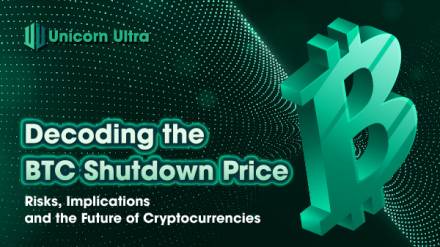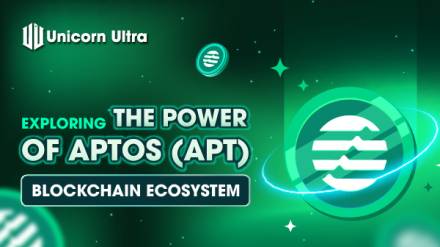The decentralized finance (DeFi) space has been rapidly evolving, with various blockchain ecosystems offering innovative solutions. Among these ecosystems, Arbitrum has emerged as a promising platform, enabling developers to build scalable and efficient applications. In this blog post, we will explore the top 6 projects on the Arbitrum ecosystem, understand how Arbitrum works, discuss its market position, learn how to bridge funds to Arbitrum, and explore why it could potentially shape the future of DeFi.
Table of Contents
- Overview of Arbitrum?
- Top 6 Projects on the Arbitrum Ecosystem
- How Does Arbitrum Work?
- Benefits of using projects in the Arbitrum ecosystem
- How to use projects in the Arbitrum ecosystem?
- How to Bridge Funds to Arbitrum
- Where to Store the Best Arbitrum Project Tokens
- Why Arbitrum Could Be the Future of DeFi
Overview of Arbitrum?
Arbitrum is a Layer 2 scaling solution for Ethereum, designed to enhance scalability and reduce transaction costs. It achieves this by utilizing a technology called Optimistic Rollups, which allows for off-chain computation and only submits the results to the Ethereum mainnet. This approach significantly improves the throughput and efficiency of decentralized applications (dApps) built on Arbitrum.
Top 6 Projects on the Arbitrum Ecosystem
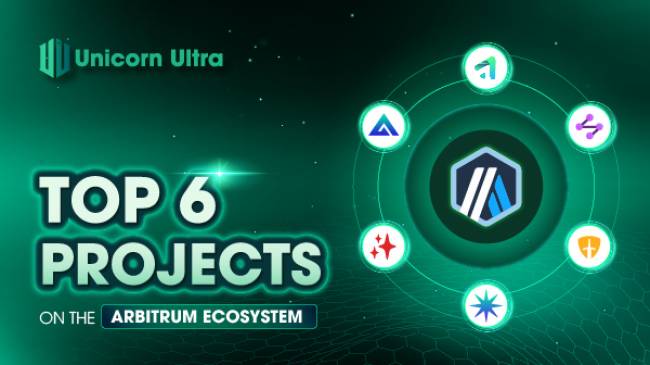
GMX
GMX is a decentralized derivatives exchange built on the Arbitrum network. It offers a wide range of financial products, including perpetual swaps, options, and futures. GMX leverages Arbitrum's scalability to provide fast and cost-efficient trading experiences for users.
Radiant
Radiant is a decentralized lending and borrowing platform that utilizes Arbitrum to offer low-cost transactions and near-instantaneous settlements. With Radiant, users can earn interest on their crypto assets or borrow funds against their holdings, all while benefiting from the scalability of Arbitrum.
MAGIC (Treasure)
MAGIC is a decentralized yield farming protocol that incentivizes liquidity provision on the Arbitrum network. By staking their tokens, users can earn additional rewards in the form of MAGIC tokens. This project leverages Arbitrum's efficiency to provide a seamless yield farming experience.
Gains Network (GNS)
Gains Network is a decentralized prediction market platform built on Arbitrum. It allows users to create and participate in prediction markets, where they can speculate on the outcome of various events. Gains Network leverages Arbitrum's scalability to ensure fast and accurate settlement of predictions.
Camelot
Camelot is a decentralized asset management platform that operates on the Arbitrum ecosystem. It enables users to create and manage investment strategies, automating the execution of trades across multiple protocols. Camelot's integration with Arbitrum ensures efficient portfolio management and reduces transaction costs.
Synapse (SYN)
Synapse is a decentralized exchange (DEX) that leverages Arbitrum's scalability to provide fast and cost-effective trading of digital assets. Synapse aims to offer a seamless user experience while maintaining the security and decentralization of the underlying blockchain.
How Does Arbitrum Work?
Arbitrum operates by taking batches of transactions from users and processing them off-chain. These transactions are then verified by a network of validators, ensuring the integrity and correctness of the computations. Once the verification is complete, the results are published on the Ethereum mainnet, settling the final state of the transactions. This process minimizes the congestion on the Ethereum network and reduces gas fees, making it more accessible and affordable for users to interact with dApps.
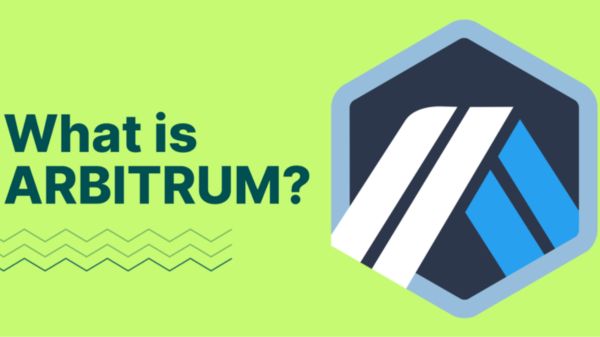
Benefits of using projects in the Arbitrum ecosystem
Arbitrum is a layer 2 scaling solution for Ethereum, designed to increase transaction throughput and reduce fees while maintaining the security and decentralization of the Ethereum network. Utilizing projects within the Arbitrum ecosystem can offer several benefits:
- Scalability: One of the primary advantages of the Arbitrum ecosystem is its ability to significantly improve scalability. By moving transactions off the Ethereum mainnet onto the Arbitrum layer 2 solution, users can experience faster and more efficient transaction processing, enabling a higher throughput and alleviating network congestion.
- Lower Transaction Fees: With the increased scalability, the Arbitrum ecosystem aims to reduce transaction fees compared to the Ethereum mainnet. Lower fees make it more cost-effective for users to interact with decentralized applications (DApps) and conduct transactions on the network, improving the overall user experience and accessibility.
- Enhanced User Experience: By leveraging Arbitrum's scalability, projects in the ecosystem can provide a smoother and more responsive user experience. Users can enjoy faster transaction confirmations, reduced latency, and improved usability, making DApps and other services built on Arbitrum more user-friendly and efficient.
- Interoperability with Ethereum: Arbitrum maintains a close relationship with the Ethereum network, allowing for seamless interoperability. Users can easily move their assets and interact with smart contracts between Ethereum and Arbitrum, leveraging the benefits of both networks without sacrificing security or compatibility.
- Security and Reliability: Arbitrum is designed to inherit the security properties of the Ethereum network. The underlying technology relies on rigorous cryptographic proofs and the established Ethereum ecosystem, providing a high level of security and reliability for projects built on the Arbitrum ecosystem.
- Access to Existing Ethereum Ecosystem: Projects in the Arbitrum ecosystem can leverage the extensive Ethereum ecosystem and developer tools. They can tap into existing Ethereum smart contracts, libraries, wallets, and other infrastructure, making it easier to build and deploy applications on Arbitrum while benefiting from the Ethereum network's vast community and resources.
- Smooth Migration Path: For projects already deployed on Ethereum, Arbitrum offers a smooth migration path. Projects can transition from the Ethereum mainnet to Arbitrum with minimal modifications to their existing codebase, allowing them to take advantage of Arbitrum's scalability benefits without the need for extensive redevelopment or rebranding.
It's important to note that while the Arbitrum ecosystem offers these benefits, it's crucial to assess each project within the ecosystem individually. Factors such as project fundamentals, team expertise, adoption, and community support should be considered when evaluating specific projects for investment or usage.
How to use projects in the Arbitrum ecosystem?
To use projects within the Arbitrum ecosystem, you typically need to follow these general steps:
- Set up a Wallet: Ensure you have a compatible wallet that supports the Arbitrum network. Some popular options include MetaMask and Trust Wallet. Make sure your wallet is properly configured to connect to the Arbitrum network.
- Add Arbitrum Network to Wallet: Add the Arbitrum network to your wallet by specifying the network details. This includes providing the network name, RPC URL, and chain ID specific to the Arbitrum network. Consult the official documentation or resources provided by your wallet provider for instructions on how to add custom networks.
- Transfer Assets to Arbitrum: If you have assets on the Ethereum mainnet that you want to use within the Arbitrum ecosystem, you'll need to transfer them to the Arbitrum network. Use the wallet interface to initiate the asset transfer by specifying the recipient address on the Arbitrum network. Follow the instructions provided by your wallet and pay attention to any associated fees or confirmation requirements.
- Access DApps and Services: Explore and access DApps, decentralized exchanges (DEXs), lending platforms, or other services built on the Arbitrum network. Visit the websites or platforms of the specific projects you are interested in. Ensure that you select the Arbitrum network within your wallet to interact with the DApps seamlessly.
- Interact with Smart Contracts: If you want to interact with specific smart contracts deployed on the Arbitrum network, you can do so by specifying the contract address and using the wallet's interface or a compatible DApp interface. This may involve activities such as token transfers, interacting with decentralized finance (DeFi) protocols, or participating in other functionalities offered by the smart contracts.
- Manage and Monitor Your Assets: Use your wallet interface to monitor your assets, track balances, and manage your portfolio within the Arbitrum ecosystem. Keep an eye on gas fees, transaction confirmations, and any necessary actions related to your assets or investments.
It's important to note that the specific steps and processes may vary depending on the projects and services you are using within the Arbitrum ecosystem. Always refer to the project's documentation, user guides, or support channels for detailed instructions on how to use their services effectively.
Additionally, as the Arbitrum ecosystem evolves, new projects may emerge, offering different functionalities and user experiences. Stay updated with the latest developments and news related to Arbitrum to explore new opportunities and services within the ecosystem.
How to Bridge Funds to Arbitrum
To bridge funds to Arbitrum, users can utilize various bridge solutions available in the ecosystem. One popular option is the Arbitrum Bridge, which allows users to transfer their assets from the Ethereum mainnet to Arbitrum. By following the instructions provided by the bridge, users can seamlessly move their funds and start interacting with dApps on Arbitrum.
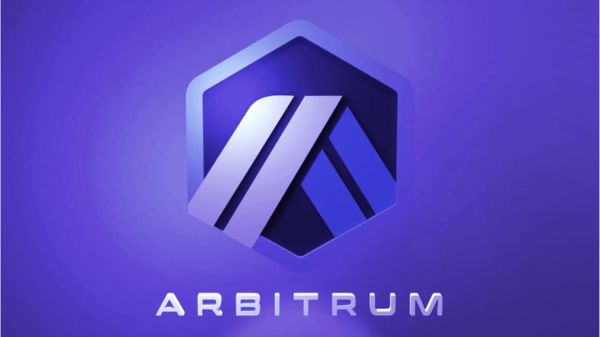
Where to Store the Best Arbitrum Project Tokens
To store tokens from the top Arbitrum projects, users can utilize compatible wallets that support the Ethereum ecosystem. Popular options include MetaMask, Trust Wallet, and Ledger. These wallets allow users to interact with the Arbitrum network and securely store their tokens.
Why Arbitrum Could Be the Future of DeFi
Arbitrum's ability to address Ethereum's scalability challenges positions it as a strong contender for the future of DeFi. With its efficient and cost-effective infrastructure, Arbitrum opens up new possibilities for developers and users alike. The projects built on the Arbitrum ecosystem offer innovative solutions across various DeFi verticals, providing users with enhanced trading, lending, borrowing, yield farming, and asset management experiences.
As the DeFi space continues to evolve, scaling solutions like Arbitrum play a vital role in realizing the full potential of decentralized finance. The top 6 projects on the Arbitrum ecosystem, including GMX, Radiant, MAGIC (Treasure), Gains Network (GNS), Camelot, and Synapse (SYN), showcase the diverse range of applications that can leverage Arbitrum's scalability and efficiency. With its seamless bridge solutions and support from compatible wallets, Arbitrum is well-positioned to drive the future of DeFi, offering users a more accessible and cost-effective way to participate in the decentralized finance ecosystem. Let's go with Uniultra to follow the latest information on the market.



